BONUS After-Class Resources: Receive the 'EverLoop Improvement System,' which comprises 5 different modules, when your child signs up for the weekly lessons. Learn more .


5 Most Commonly Tested Math Problem Sums for Primary 4

Primary 4 mathematics introduces students to a range of problem sums, challenging their analytical and mathematical reasoning skills. These P4 math problem sums often encompass various concepts and problem-solving strategies, each designed to enhance students' mathematical proficiency. Understanding the type of problem sum and mastering the appropriate solving techniques are crucial for success in primary mathematics. Let's explore the most commonly tested problem sums for Primary 4 and delve into effective solving methods.
1. Comparison Model
A comparison bar model displays known and unknown quantities using solid bars, organised vertically, one below the other. This arrangement facilitates easy observation of differences in bar lengths, aiding students in solving the questions effectively.
Example Question:
Leon has a total of 2380 stamps. He has 566 more local stamps than foreign stamps. How many local stamps does he have?
2 units = 2380 - 566
= 1814
1 unit = 1814 ÷ 2
= 907
907 + 566 = 1473
Leon has 1473 local stamps

2. Assumption Method
The assumption method, is also known as the supposition method.
The method is used when:
There are 2 types of items and each item has a value.
E.g. A car (item 1) has 4 wheels (value), while a bicycle (item 2) has 2 wheels (value).
Total value is given but exact number of each item is unknown.
E.g. There are 56 wheels in total. There are 16 cars and bicycles together.
There were 57 vans and motorcycles on the road. There were 138 wheels in total. What was the total number of vans present?
Tip: If the question asks us to solve for vans, we assume the opposite (motorcycles).
Assuming all motorcycles,
57 × 2 = 114
138 – 114 = 24
24 ÷ 2 = 12
There were 12 vans.
3. Grouping Concept
Grouping concept problem sums involves grouping items together to make 1 group.
Then, find the number of such groups.
Look out for the proportion of one item to the other.
Take note that the items may have different values per unit.
Find the total value of 1 group first.
For some questions, you may need to find the lowest common multiple of 2 numbers.
A shop owner sold an equal number of cakes and drinks. What quantity of cakes was sold, given that each cake was priced at $4 and each drink at $3, resulting in a total collection of $84 by the shop owner?
Find one group.
Group 1 cake and 1 drink.
$4 + $3 = $7
Find the number of groups.
$84 ÷ $7 = 12
1 group will have 1 cake and 1 drink.
12 groups will have 12 cakes and 12 drinks.
Hence, there were 12 cakes sold.

4. Stacking Model
Stacking models involve two or more items with multiple quantities of each item. These problems often require careful organization and calculation to determine the quantities or amounts involved. For example, “Kaylee bought 2 cups, 3 plates and 5 spoons.”
At a cinema, an adult ticket costs $6 more than a child ticket. Mr. Tan and his family bought 2 adult tickets and 4 children’s tickets for $54. How much does an adult ticket cost?

Extra = $6 × 2
= $12
6 units = $54 – $12
= $42
1 unit = $42 ÷ 6
= $7
Adult ticket = $7 + $6
= $13
The adult ticket cost $13.
5. Equal Stage
Equal stage problem sums involve scenarios where two people or items have equal quantities at the beginning or the end. Drawing models and understanding keywords are essential for effectively solving the problem sums.
Here are some tips for equal stage problem sums:
Draw models of equal length when the two people/items have the same quantity.
Keywords like “gave away” means you should cut out from the model.
Keywords like “bought more” means you should add to the model.
For 2 equal fractions, we make the numerator the same.
In a carnival, 23 of the children tickets sold was equal to 1112 of the adult tickets sold. There were 108 more children tickets than adult tickets sold. How many children tickets were sold?
Children → 23 = 2233
Adults → 1112 = 2224
Children = 33 units
Adults = 24 units
33 units – 24 units = 9 units
9 units = 108
1 unit = 108 ÷ 9
= 12
33 units = 12 × 33
= 396
U nderstanding and mastering the various types of problem sum encountered in Primary 4 Mathematics is essential for students' success. With effective problem-solving strategies and practice, students can tackle math word problems confidently and excel in their mathematical journey. This problem sums guide for parents provides invaluable insights into helping students navigate through mathematical challenges, ensuring a solid foundation for future learning.

At AGrader , primary students are equipped with efficient techniques to solve 90% of challenging math problems swiftly. Our experienced tutors employ heuristics to teach problem-solving skills, enabling children to tackle even the most perplexing problem sums with ease.
Targeted at students from Primary 1 to 6, our tuition programme follows the latest syllabus outlined by the Ministry of Education in Singapore. The Primary Math Tuition Programme objectives include ensuring students develop a strong grasp of core mathematical concepts, applying these concepts through critical thinking and heuristics in problem-solving, and fostering confidence for school examinations.

Moreover, AGrader Learning Centre lessons are tailored to accommodate students of different proficiency levels. Emphasizing conceptual clarity and application-driven learning, students acquire the essential skills and knowledge essential for success in their mathematics assessments. With convenient accessibility across 19 locations throughout the island, parents have the flexibility to select the nearest centre, enabling effortless engagement in the programme.
Furthermore, the Primary Math Tuition Programme offers complimentary after-class support via the EverLoop Improvement System, which consists of five modules meticulously crafted to meet different student needs beyond the weekly lessons to improve further.
Join Our AGrader Community Today! (Free for all AGrader & Non-AGrader students)
Join our Telegram and Whats App channels to gain access to more study tips, free downloads, and much more for all subjects.
- WhatsApp channel: https://bit.ly/agwachannel
- Telegram channel: https://bit.ly/agtelchannel
- Primary Mathematics
Recent Posts
Solving the 5 Hardest PSLE Math Questions: A Walk-Through of 2023 PSLE Questions with Sample Solutions
4 Most Commonly Tested Types of Secondary Math Questions in Algebraic Fractions & Formulae
5 Common Mistakes in Primary 5 Maths Ratio Questions and How to Avoid Them

Or search by topic
Number and algebra
- The Number System and Place Value
- Calculations and Numerical Methods
- Fractions, Decimals, Percentages, Ratio and Proportion
- Properties of Numbers
- Patterns, Sequences and Structure
- Algebraic expressions, equations and formulae
- Coordinates, Functions and Graphs
Geometry and measure
- Angles, Polygons, and Geometrical Proof
- 3D Geometry, Shape and Space
- Measuring and calculating with units
- Transformations and constructions
- Pythagoras and Trigonometry
- Vectors and Matrices
Probability and statistics
- Handling, Processing and Representing Data
- Probability
Working mathematically
- Thinking mathematically
- Mathematical mindsets
- Cross-curricular contexts
- Physical and digital manipulatives
For younger learners
- Early Years Foundation Stage
Advanced mathematics
- Decision Mathematics and Combinatorics
- Advanced Probability and Statistics
Problem Solving

Problem Solving and the New Curriculum Age 5 to 11
Developing a Classroom Culture That Supports a Problem-solving Approach to Mathematics Age 5 to 11
Developing Excellence in Problem Solving with Young Learners Age 5 to 11
Using NRICH Tasks to Develop Key Problem-solving Skills Age 5 to 11
Trial and Improvement at KS1 Age 5 to 7
Trial and Improvement at KS2 Age 7 to 11
Working Systematically - Primary Teachers Age 5 to 11
Number Patterns Age 5 to 11
Working Backwards at KS1 Age 5 to 7
Working Backwards at KS2 Age 7 to 11
Reasoning Age 5 to 11
Visualising at KS1 - Primary Teachers Age 5 to 7
Visualising at KS2 - Primary Teachers Age 7 to 11
Conjecturing and Generalising at KS1 - Primary Teachers Age 5 to 7
Conjecturing and Generalising at KS2 - Primary Teachers Age 7 to 11
- Mathematical Problem Solving in the Early Years
- Low Threshold High Ceiling - an Introduction
- What's All the Talking About?
- Group-worthy Tasks and Their Potential to Support Children to Develop Independent Problem-solving Skills
- Developing the Classroom Culture: Using the Dotty Six Activity as a Springboard for Investigation
If you're seeing this message, it means we're having trouble loading external resources on our website.
If you're behind a web filter, please make sure that the domains *.kastatic.org and *.kasandbox.org are unblocked.
To log in and use all the features of Khan Academy, please enable JavaScript in your browser.
Unit 1: Place value
Unit 2: addition, subtraction, and estimation, unit 3: multiply by 1-digit numbers, unit 4: multiply by 2-digit numbers, unit 5: division, unit 6: factors, multiples and patterns, unit 7: equivalent fractions and comparing fractions, unit 8: add and subtract fractions, unit 9: multiply fractions, unit 10: understand decimals, unit 11: plane figures, unit 12: measuring angles, unit 13: area and perimeter, unit 14: units of measurement.
- Home |
- About |
- Contact Us |
- Privacy |
- Newsletter |
- Shop |
- 🔍 Search Site
- Easter Color By Number Sheets
- Printable Easter Dot to Dot
- Easter Worksheets for kids
- Kindergarten
- All Generated Sheets
- Place Value Generated Sheets
- Addition Generated Sheets
- Subtraction Generated Sheets
- Multiplication Generated Sheets
- Division Generated Sheets
- Money Generated Sheets
- Negative Numbers Generated Sheets
- Fraction Generated Sheets
- Place Value Zones
- Number Bonds
- Addition & Subtraction
- Times Tables
- Fraction & Percent Zones
- All Calculators
- Fraction Calculators
- Percent calculators
- Area & Volume Calculators
- Age Calculator
- Height Calculator
- Roman Numeral Calculator
- Coloring Pages
- Fun Math Sheets
- Math Puzzles
- Mental Math Sheets
- Online Times Tables
- Online Addition & Subtraction
- Math Grab Packs
- All Math Quizzes
- 1st Grade Quizzes
- 2nd Grade Quizzes
- 3rd Grade Quizzes
- 4th Grade Quizzes
- 5th Grade Quizzes
- 6th Grade Math Quizzes
- Place Value
- Rounding Numbers
- Comparing Numbers
- Number Lines
- Prime Numbers
- Negative Numbers
- Roman Numerals
- Subtraction
- Add & Subtract
- Multiplication
- Fraction Worksheets
- Learning Fractions
- Fraction Printables
- Percent Worksheets & Help
- All Geometry
- 2d Shapes Worksheets
- 3d Shapes Worksheets
- Shape Properties
- Geometry Cheat Sheets
- Printable Shapes
- Coordinates
- Measurement
- Math Conversion
- Statistics Worksheets
- Bar Graph Worksheets
- Venn Diagrams
- All Word Problems
- Finding all possibilities
- Logic Problems
- Ratio Word Problems
- All UK Maths Sheets
- Year 1 Maths Worksheets
- Year 2 Maths Worksheets
- Year 3 Maths Worksheets
- Year 4 Maths Worksheets
- Year 5 Maths Worksheets
- Year 6 Maths Worksheets
- All AU Maths Sheets
- Kindergarten Maths Australia
- Year 1 Maths Australia
- Year 2 Maths Australia
- Year 3 Maths Australia
- Year 4 Maths Australia
- Year 5 Maths Australia
- Meet the Sallies
- Certificates
Year 4 Maths Worksheets UK Hub Page
Welcome to our Year 4 Maths Worksheets Hub page.
Here you will find our selection of printable maths worksheets for Year 4 children, for your child will enjoy.
Take a look at our times table colouring pages, or maybe some of our fraction of shapes worksheets. Perhaps you would prefer our time worksheets, or learning about line or block symmetry?
For full functionality of this site it is necessary to enable JavaScript.
Here are the instructions how to enable JavaScript in your web browser .
- This page contains links to other Math webpages where you will find a range of activities and resources.
- If you can't find what you are looking for, try searching the site using the Google search box at the top of each page.
Year 4 Maths Learning
Here are some of the key learning objectives for the end of Year 4:
- know and use Place value up to 4 digits
- Compare and order numbers up to 10,000
- Counting on and back in 1s, 10s, 100s and 1,000s from different starting points
- Position numbers on a number line up to 10,000
- Round numbers to the nearest 10, 100 or 1000.
- Count backwards through zero and use negative numbers.
- add and subtract with up to 4 digits in columns
- add or subtract 1s, 10s, 100s or 1000s from a 4-digit number
- solve 2-step problems using addition and subtraction
- recall and use multiplication and division facts up to 12x12
- recognise and use factor pairs
- multiply 2-digit and 3-digit numbers by a 1-digit number
- solve problems using multiplication and division
- count up and down in hundredths
- recognise and use equivalent fractions
- add and subtract fractions with the same denominator
- solve fraction problems including with non-unit fractions
- write common fractions such halves and quarters as decimals;
- understand tenths and hundredths as decimals
- round decimals with 1dp to the nearest whole
- compare numbers with up to 2dp
- solve simple money and measure problems
- measure, compare and calculate using different measures
- find the area and perimeter of squares and rectangles
- convert between 12- and 24-hour clock
- convert between different units of measure
- identify and order acute and obtuse angles
- compare and classify 2D and 3D shapes according to their properties
- identify lines of symmetry in 2D shapes
- use coordinates in the first quadrant
- translate shapes up, down, left and right
- interpret and present data in bar graphs, pictograms and tabels
- solve 1-step and 2-step problems using data in tables, pictograms and graphs
Please note:
Our site is mainly based around the US Elementary school math standards.
Though the links on this page are all designed primarily for students in the US, but they are also at the correct level and standard for UK students.
The main issue is that some of the spelling is different and this site uses US spelling.
Year 4 is generally equivalent to 3rd Grade in the US.
On this page you will find link to our range of math worksheets for Year 4 pupils.
Quicklinks to Year 4 ...
- Online 3rd Grade Practice
- Place Value Zone
- Mental Math Zone
Word Problems Zone
Fractions zone.
- Measurement Zone
Geometry Zone
Data analysis zone.
- Fun Zone: games and puzzles
Coronavirus Stay At Home Support
For those parents who have found themselves unexpectedly at home with the kids and need some emergency activities for them to do, we have started to develop some Maths Grab Packs for kids in the UK.
Each pack consists of at least 10 mixed math worksheets on a variety of topics to help you keep you child occupied and learning.
The idea behind them is that they can be used out-of-the-box for some quick maths activities for your child.
They are completely FREE - take a look!
- Free Maths Grabs Packs
Place Value & Number Sense Zone
Year 4 numbers & place value worksheets.
Using these Year 4 maths worksheets will help your child to:
- learn their place value with 4 digit numbers;
- use place value models to understand how to combine thousands, hundreds, tens and ones;
- understand the value of each digit in a 4 digit number;
- learn to use standard and expanded form with 4 digit numbers.
- learn to read and write Roman numerals
- Place Value Models 4 Digits
- Place Value 4 Digit Numbers Worksheets (conversion)
- Ordering 4-Digit Numbers
- Ordering Negative Numbers -10 to 10
- Roman Numerals worksheets
Year 4 Counting & Sequences Worksheets
Each worksheets consists of a sequence which has been partially filled in. The rest of each sequence must be completed.
At this grade, the focus is on counting on and back in constant steps of a digit.
- Counting on and back by digits
Rounding, Inequalities, Multiples and Balancing Equations
Using these Year 4 Maths worksheets will help your child to:
- round a number to the nearest 10, 100 or 1000;
- use the > and < symbols correctly for inequalities;
- use multiples and apply them to solve problems.
- learn to balance math equations
- Rounding to the nearest 10 Worksheets
- Rounding to the nearest 100 worksheets
- Rounding to the nearest 1000 worksheets
- Rounding Inequalities Multiples Worksheets
- Balancing Math Equations
Year 4 Mental Math Zone
Here you will find a range of printable Year 4 mental maths quizzes for your child to enjoy.
Each quiz tests the children on a range of math topics from number facts and mental arithmetic to geometry, fraction and measures questions.
A great way to revise topics, or use as a weekly math quiz!
- Year 4 Mental Maths Test sheets
Number Bonds Worksheets
The worksheets on this page will help to develop children's knowledge of numbers bonds to 20, 50 and 100.
There are a range of matching and wordsearches for children to enjoy whilst developing their number bond knowledge.
- Number Bonds to 50 and 100
Top of Page
Year 4 Addition Worksheets
- learn to add numbers mentally to 100;
- add on 1, 10, 100 and 1000 to different numbers;
- learn to add 4 digit numbers in columns;
- Addition Facts Worksheets to 100+100
- 4-Digit Addition Worksheets
- Money Addition Worksheets (£ )
Year 4 Subtraction Worksheets (3rd Grade)
Using these subtraction worksheets will help your child to:
- learn to subtract numbers mentally to 100;
- learn to do 4 Digit column subtraction.
- Third Grade Subtraction Worksheets to 100
- 4 Digit Subtraction Worksheets
- Money Subtraction Worksheets UK (£ )
Year 4 Multiplication Worksheets
- learn their multiplication tables up to 12 x 12;
- understand and use different models of multiplication;
- solve a range of Year 4 Multiplication problems.
Online Times Table Practice
- Times Tables Practice Zone
Understanding Multiplication
- Understanding Multiplication Facts Worksheets to 10x10
Multiplication Table Worksheets
- Multiplication Table Worksheets - 2 3 4 5 10
- Multiplication Drill Sheets 6 7 8 9
- Fun Multiplication Worksheets to 10x10
- Times Table Worksheets Circles 1 to 12 tables
- Multiplying (integers) by 10 and 100 Worksheets
- Multiplying by Multiples of 10 and 100
2-Digit Multiplication
- 2 Digit Multiplication Worksheets
Multiplication Word Problems
- Year 4 Multiplication Word Problem Worksheets (3rd Grade)
Randomly Generated Multiplication Worksheets
Using our random worksheet generator, you can:
- Choose the tables you want to test;
- Choose how big you want the numbers to go - up to 5 times, 10 times or bigger!
- Choose how many questions per page.
- Times Tables Worksheets (randomly generated)
- Free Multiplication Worksheets (randomly generated)
- Single Digit Multiplication Worksheets Generator
- Multiplication & Division Worksheets (randomly generated)
Year 4 Division Worksheets
Using these Year 4 Maths worksheets will help your child learn to:
- understand how division and multiplication relate to one another;
- know their division facts to 10x10;
- begin to learn 2-digit by 1-digit long division.
- Division Facts to 10x10 Worksheets
- Divding by Multiples of 10 and 100 Worksheets
- Year 4 Long Division Worksheets (3rd grade)
- Division Facts Worksheets (randomly generated)
Using the 3rd Grade Math worksheets will help your child to:
- apply their addition, subtraction, and multiplication skills;
- develop their knowledge of fractions;
- apply their knowledge of rounding and place value;
- solve a range of 'real life' problems.
These sheets involve solving one or two more challenging longer problems.
- Year 4 Math Problems (3rd Grade)
These sheets involve solving many 'real-life' problems involving data.
- Year 4 Math Word Problems for kids (3rd Grade)
These sheets involve solving 3-digit and 4-digit addition word problems.
- Addition Word Problems 3rd Grade (3- and 4-digits)
These sheets involve solving 3-digit and 4-digit subtraction problems.
- Subtraction Word Problems 3rd Grade
These sheets involve solving a range of multiplciation problems.
These sheets involve solving a range of division problems.
- Division Worksheets Grade 3 Word Problems
Year 4 Fraction Worksheets
Using these sheets will help your child to:
- understand what fractions are;
- relate fractions to everyday objects and quantities;
- place different fractions on a number line;
- shade in different fractions of a shapes;
- work out unit fractions of numbers.
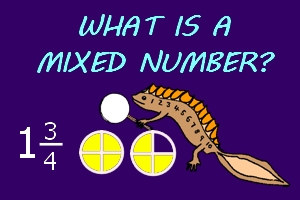
- What is a Mixed Number Support page
- Finding Fractions - Fraction Spotting
- Fractions of Shapes Worksheets
- Unit Fraction of Numbers
- Halves and Quarters (up to 100)
- Fraction Number Line Sheets
- Adding Fractions with Like Denominators
- Subtracting Fractions with like denominators
- Fraction Riddles for kids (easier)
Year 4 Geometry Worksheets
The following worksheets will help your child to:
- Identify and name a range of 2d and 3d shapes;
- Draw 2d shapes;
- Use reflective symmetry to reflect shapes in a mirror line.
- recognise and identify right angles and lines of symmetry;
- recognise and identify parallel lines;
- identify the faces, edges, vertices and nets of 3d shapes;
- Year 4 Free Printable Geometry Worksheets
- Block Symmetry Worksheet
- Line Symmetry Worksheets
- Symmetry Activities
- Geometry Nets Information and Worksheets
Measurement Zone, including Time & Money
Year 4 measurement worksheets.
- Year 4 Measurement Worksheets - reading scales
- Metric Conversion Worksheets
Year 4 Money Worksheets
Using challenges is a great way to get kids to use their thinking skills and extend learning by applying the knowledge they have.
- count a range of coins up to £10
- compare money amounts
- apply their existing skills to puzzle out clues;
- understand money terminology;
- develop their thinking skills.
- Year 4 Money Challenges
- Column Addition Money Worksheets (UK)
- Column Subtraction Money Worksheets (UK)
Area and Perimeter Worksheets
- understand area and perimeter;
- learn how to find the area and perimeter of rectangles.
- Area Worksheets
- Perimeter Worksheets
Time Worksheets
Using the sheets in this section will help your child to:
- tell the time to the nearest 5 minutes;
- become familiar with both digital and analogue times;
- use the words 'past' and 'to' to describe the time correctly.
- add and subtract time intervals from times and work out time intervals.
- Add and Subtract Time Worksheets
- Elapsed Time Worksheets
- Printable Time Worksheets - Time Puzzles (easier)
- 24 Hour Clock Conversion Worksheets
On this page there are a selection of bar and picture graphs, including bar graphs with real-life data such as tree heights.
- Year 4 Bar Graph Worksheets (3rd grade)
- Year 4 Venn Diagram Worksheets
Fun Zone: Puzzles, Games and Riddles
Year 4 maths games.
The following games involve different Year 4 Maths activities which you and your child can enjoy together.
- Year 4 / Third Grade Math Games
Year 4 Math Puzzles
The puzzles will help your child practice and apply their addition, subtraction and multiplication facts as well as developing their thinking and reasoning skills in a fun and engaging way.
- Year 4 Math Puzzle Worksheets (3rd Grade)
Math Salamanders Year 4 Maths Games Ebook
Our Year 4 Maths Games Ebook contains all of our fun maths games, complete with instructions and resources.
This ebooklet is available in our store - use the link below to find out more!
- Year 4 Maths Games Ebook
Other UK Maths Worksheet pages
See below for our other maths worksheets hub pages designed for children in the UK.
How to Print or Save these sheets 🖶
Need help with printing or saving? Follow these 3 steps to get your worksheets printed perfectly!
- How to Print support
Subscribe to Math Salamanders News
Sign up for our newsletter to get free math support delivered to your inbox each month. Plus, get a seasonal math grab pack included for free!

- Newsletter Signup
Return to Math Salamanders UK Home Page
Return from Year 4 Maths Worksheets to Math Salamanders Homepage
Math-Salamanders.com
The Math Salamanders hope you enjoy using these free printable Math worksheets and all our other Math games and resources.
We welcome any comments about our site or worksheets on the Facebook comments box at the bottom of every page.
New! Comments
TOP OF PAGE
© 2010-2024 Math Salamanders Limited. All Rights Reserved.
- Privacy Policy
- Copyright Policy
Primary 4 Maths Questions
These are problems that other students can't solve. Your future exam questions are probably inside so use these to practice! 1) Snap homework photo 2) Upload and wait 3) Solution emailed to you free!

{{notification.title}}


360 Tutoring Program
*If you qualify, the Free 360 Tutoring Program will be extended to you at no extra charge.
On top of the tutor you are getting, ManyTutors will provide unlimited free tutors to help you with any questions you may have for other subjects. Just snap a photo of your homework, post, and someone will provide the solution for free.
You will get a complimentary premium account on Ask ManyTutors that allows you to ask English, Chinese, Malay, Math, Science, Geography and History homework questions free of charge.
Under the 360 Program, the tutor will receive a different rate from what you are paying to ManyTutors.
Primary 4 Syllabus
Aligned with the latest 2021 Singapore MOE Math syllabus and endorsed by Education Alliance of Finland. Hundreds of hours of learning content for all topics covered in P4 to get your child build a strong Math foundation!
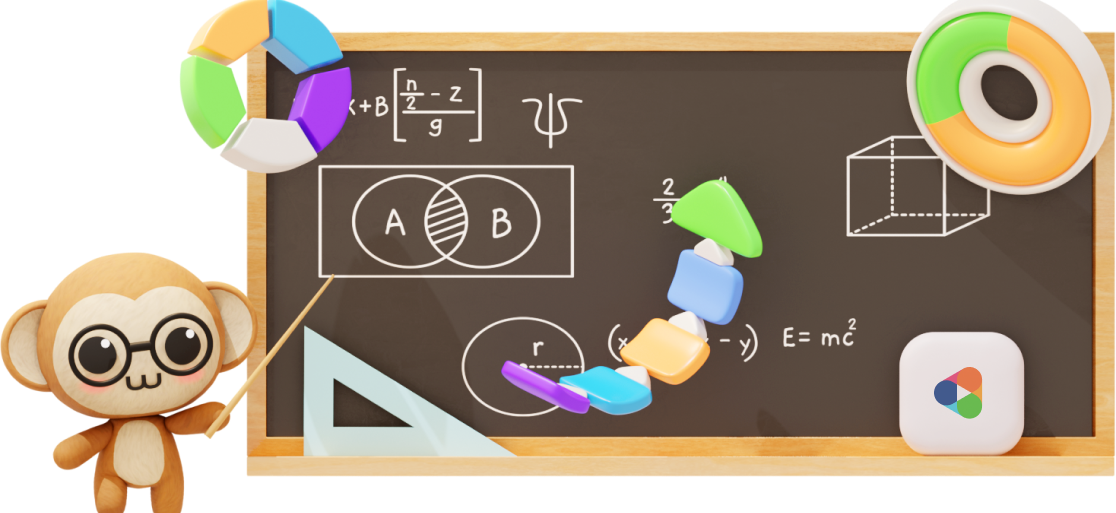
In P4, your child will expand their problem-solving toolbox by learning heuristics, such as drawing diagrams and looking for patterns.
If your child’s foundation is weak, they will struggle. Soon, they dread doing their homework or going to class.
They are afraid that they can’t keep up.
With Practicle, they can!
First, our platform will use AI to personalise our questions to match your child’s current ability.
Then, over time, as your child improves, we’ll give them tougher questions.
Even if the class has moved on, they can continue to build their skills.
That’s the beauty of self-paced learning.
Our syllabus is 100% aligned with MOE and is certified by the Education Alliance of Finland (EAF) for educational quality and effectiveness.
Gamification to make learning engaging and rewarding
A.I. + Practicle system to personalise questions to your child’s ability
Learning reports for you to track and optimise your child’s education journey
Overview of primary 4 math syllabus.
Here are the P4 topics and skills that are covered our system. The 2020 Primary 4 Math Syllabus can be divided into 3 main branches – Numbers, Measurement and Geometry and finally, Statistics.
P4 Math: Numbers
The Primary 4 (P4) topics that are covered under Numbers are Whole Numbers, Multiplication, Division, Factors and Multiples, Fractions and Decimals. The following shows the breakdown of the skills in topic:

Whole Numbers
- Compare and order numbers
- Understand place values up to 10 000
- Round numbers to the nearest 10, 100 and 1 000
- Estimate the value of an equation

Multiplication
- Multiply a 4-digit number by 1-digit
- Multiply up to 3-digits by 2 digits
- Multiply up to 3-digits by 10

- Divide a 4-digit number by 1-digit

Factors & Multiples
- Check if a 1-digit number is a factor of a given number within 100
- Find common factors between 2 numbers
- Check if a number is a multiple of a given 1-digit number
- Find common multiples of 2 1-digit numbers

- Compare and order whole numbers and fractions
- Compare fractions with a common denominator
- Add fractions with different denominators
- Subtract fractions with different denominators
- Find a part of a set of objects
- Convert mixed numbers to improper fractions and vice versa

- Understand place values of tenths
- Understand place values of hundredths
- Understand place values of thousandths
- Convert a decimal to a fraction and vice versa
- Compare and order decimals
- Rounding decimals to the nearest whole number, 1 decimal place and 2 decimal places

Operation of Decimals
- Add decimals up to 2 decimal places
- Subtract decimals up to 2 decimal places
- Multiply decimals up to 2 decimal places by 1-digit
- Divide decimals up to 2 decimal places by 1-digit
- Divide a whole number by a whole number
P4 Math: Measurement and Geometry
The Primary 4 (P4) topics that are covered under Measurement and Geometry are Time, Angles, Line symmetry, 2D Shapes, Area and Perimeter. See the following for the breakdown of skills in each topic:

- Read the 24-hour clock
- Find the duration of an event
- Measure time in seconds
- Find starting time / ending time

- Identify symmetric figures
- Check if a straight line is a line of symmetry
- Complete a symmetric figure with respect to a given line of symmetry

- Name an angle
- Measure angles in degrees
- Relate quarter, half 3/4 and complete turns to angles in degrees
- Find angles between 2 directions on a 8-point compass

Area & Perimeter
- Find the length of a side of a square
- Find the dimension of a rectangle
- Find the area of rectilinear figures

- Know the properties of a square
- Know the properties of a rectangle
P4 Math: Graphs
The Primary 4 (P4) topics that are covered under Statistics include Data Analysis. Refer below for the breakdown of the skills in this topic.
Data Analysis
- Complete a table with given data
- Read and interpret line graphs
Sample P4 questions and video explanations
- Explanation 1
- Explanation 2

Experience Practicle free, no commitment no hidden cost no lock-in
Try our learning platform free with a 7 day trial and see if your child likes it.

Practicle is an online gamified Singapore Math adaptive learning platform that helps primary school children master Math through understanding and fun.
- EAF Certification
- Privacy policy
- Terms of use
- Math heuristics guide
- Math problem sum guide
© 2024 Practicle. All Rights Reserved,
- A.I. Math Tutor
- Math Vision: Our video tutorials

Reading & Math for K-5
- Kindergarten
- Learning numbers
- Comparing numbers
- Place Value
- Roman numerals
Subtraction
- Multiplication
- Order of operations
- Drills & practice
Measurement
- Factoring & prime factors
- Proportions
- Shape & geometry
- Data & graphing
- Word problems
- Children's stories
- Leveled Stories
- Context clues
- Cause & effect
- Compare & contrast
- Fact vs. fiction
- Fact vs. opinion
- Main idea & details
- Story elements
- Conclusions & inferences
- Sounds & phonics
- Words & vocabulary
- Reading comprehension
- Early writing
- Numbers & counting
- Simple math
- Social skills
- Other activities
- Dolch sight words
- Fry sight words
- Multiple meaning words
- Prefixes & suffixes
- Vocabulary cards
- Other parts of speech
- Punctuation
- Capitalization
- Narrative writing
- Opinion writing
- Informative writing
- Cursive alphabet
- Cursive letters
- Cursive letter joins
- Cursive words
- Cursive sentences
- Cursive passages
- Grammar & Writing
Breadcrumbs
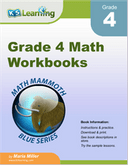
Download & Print From only $2.00
Fourth Grade Math Worksheets
Grade 4 math worksheets.
Our grade 4 math worksheets help students build mastery in computations with the 4 basic operations , delve deeper into the use of fractions and decimals and introduce concept related to factors.
4 Operations
Place Value & Rounding
Mental Multiplication
Multiply in Columns
Mental Division
Long Division
Order of Operations
Fractions & decimals
Fractions to/from Decimals
Roman Numerals
Data & Graphing
Word Problems

Sample Grade 4 Math Worksheet
What is K5?
K5 Learning offers free worksheets , flashcards and inexpensive workbooks for kids in kindergarten to grade 5. Become a member to access additional content and skip ads.

Our members helped us give away millions of worksheets last year.
We provide free educational materials to parents and teachers in over 100 countries. If you can, please consider purchasing a membership ($24/year) to support our efforts.
Members skip ads and access exclusive features.
Learn about member benefits
This content is available to members only.
Join K5 to save time, skip ads and access more content. Learn More
- Forgot Password?
- Skills by Standard
- Skills by Grade
- Skills by Category
Go to profile
- Assignments
- Assessments
- Report Cards
- Our Teachers
- 4 Primary 4 Worksheets
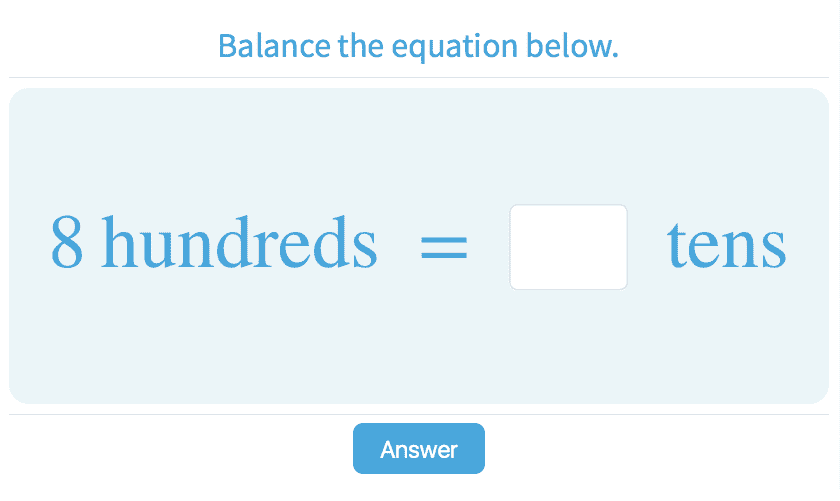
The third grade is the start of multiplication, mixed fractions, and more complex number properties. As the math skills start becoming more complicated, students may need some extra help to truly grasp the concepts. Our teachers help fill the gaps in learning and offer their best tips in figuring out
- Students learn about angles, multiplication rules, measurements, and other third-grade math skills.
- On-demand videos for math skills by teachers who specialize in teaching math to younger students.
- Learn and master the fundamentals of algebra to prepare for more complex concepts in the next grade.

Free Mathematics Tutorials
- Math Problems
- Algebra Questions and Problems
- Graphs of Functions, Equations, and Algebra
- Free Math Worksheets to Download
- Analytical Tutorials
- Solving Equation and Inequalities
- Online Math Calculators and Solvers
- Free Graph Paper
- Math Software
- The Applications of Mathematics in Physics and Engineering
- Exercises de Mathematiques Utilisant les Applets
- Calculus Tutorials and Problems
- Calculus Questions With Answers
- Free Calculus Worksheets to Download
- Geometry Tutorials and Problems
- Online Geometry Calculators and Solvers
- Free Geometry Worksheets to Download
- Trigonometry Tutorials and Problems for Self Tests
- Free Trigonometry Questions with Answers
- Free Trigonometry Worksheets to Download
- Elementary Statistics and Probability Tutorials and Problems
- Mathematics pages in French
- About the author
- Primary Math
- Middle School Math
- High School Math
- Free Practice for SAT, ACT and Compass Math tests
Maths Problems With Answers - Grade 4
A set of Maths problems with answers for grade 4 are presented. Also Solutions and explanations are included.
- Jim drove 768 miles of a 1200 miles journey. How many more miles does he need to drive to finish his journey?
- There are 123 boxes of sweets in a store. There are 25 sweets in each box. How many sweets are in the store?
- There are 365 days in one year, and 100 years in one century. How many days are in one century?
- Billy read 2 books. He read the first one in one week with 25 pages everyday. He read the second book in 12 days with 23 pages everyday. What is the total number of pages that Billy read?
- 123 school girls are to be transported in small vans. Each van can carry 8 girls only. What is the smallest possible number of vans that are needed to transport all 123 school girls?
- John had $100 to buy drinks and sandwiches for his birhtday party. He bought 5 small boxes of drinks at $4 each box and 8 boxes of sandwiches at $6 each box. How much money was left after the shopping?
- A factory produces 5500 toys per week. If the workers at this factory work 4 days a week and if these workers make the same number of toys everyday, how many toys are produced each day?
- Tom, Julia, Mike and Fran have 175 cards to use in a certain game. They decided to share them equally. How many cards should each one take and how many cards are left?
- Sam, Carla and Sarah spent on afternoon collecting sea shells. Sam collected 11. If we add the number of sea shells collected by Sam and Carla, the total would be 24. If we add the number of sea shells collected by Carla and Sarah, the total would be 25 shells. How many shells did each one collect?
- Mr Joshua runs 6 kilometers everyday from Monday to Friday. He also runs 12 kilometers a day on Saturday and Sunday. How many kilometers does Joshua run in a week?
- Tom and Bob are brothers and they each had the same amount of money which they put together to buy a toy. The cost of the toy was $22. If the cashier gave them a change of 6$, how much money did each have?
- John has 5 boxes of sweets. One group of boxes has 5 sweets in each box. The second group of boxes has 4 sweets in each box. John has a total of 22 sweets. How many boxes of each type John has?(Hint: use table)
- There is a total of 16 chickens and rabbits in a farm. The total number of legs (chickens and rabbits) is equal to 50. How many chickens and how many rabbits are there?(Hint:use a table)
- There are 4 more chickens than rabbits in a farm. The total number of legs (chickens and rabbits) is equal to 44. How many chickens and how many rabbits are there?(Hint:use a table)
Answers to the Above Questions
- a) UK b) Russia c) 7,500,148 d) 49,839,760 e) Russia, Canada, USA, China, India, Uk.
- 3075 sweets
- 36,500 days in one century
- 16 vans (no decimal values)
- 1375 toys per day
- 43 each and 3 left
- 80 cm squared
- Sam: 11, Carla: 13 and Sarah: 12
- 54 kilometers
- 2 boxes with 5 sweets each and 3 boxes with 4 sweets each
- 7 chickens and 9 rabbits
- 10 chickens and 6 rabbits
References and Links
Popular pages.
- Grade 4 Math Word Problems With Solutions and Explanations
- Primary Math (Grades 4 and 5) - Free Questions and Problems With Answers
- Grade 4 Math Questions With Answers
- Numbers - Grade 4 Math Questions With Answers
- Math Word Problems with Answers for Grade 5
privacy policy
- (+1) 832 630 3321
- [email protected]
- Primary Math
Primary Mathematics 4
About This Course
Ready for Primary Math 4? Take the PM 3A and PM 3B Assessment Tests to find out! Not sure? Check out the other assessment tests to see where your student fits in.
What’s included? Includes daily student instruction, 34 weekly lessons for parents, and solutions to all word problems — all utilizing the methods, strategies, and terminology of the Singapore Math curriculum. Also included are solutions for problems in the Intensive Practice and Challenging Word Problems books.
Just getting started with Singapore Math curriculum? Check out our Getting Started page for more information about why Singapore Math might be right for you .
Books: Find the correct books on our Books page.
Material Includes
- Daily Instruction Videos for Students
- Challenging Word Problem Solutions
- Intensive Practice Solutions
- Week-at-a-glance for Parents
Requirements
- Textbook 4A (US Edition)
- Textbook 4B (US Edition)
- Workbook 4A (US Edition)
- Workbook 4B (US Edition)
- Intensive Practice 4A (US Edition)
- Intensive Practice 4B (US Edition)
- Challenging Word Problems 4 (CC Edition)
- Workbook Answer Key for 4A-6B (US Edition)
Target Audience
- Students who have passed the PM 3A and 3B Assessment Tests
Welcome Students! 00:14:00 Preview
How to use singapore math live preview, weekly schedule (sample) preview, weekly schedule (complete), recording lengths by week, weekly overview with wb & ip solutions 00:42:15 preview, solutions: cwp p. 4-9 00:30:56 preview, student instruction: exercise 1 00:6:31 preview, student instruction: exercise 2 00:9:07 preview, student instruction: exercise 3 00:10:13 preview, student instruction: exercise 4 00:3:03 preview, student instruction: exercise 5 00:10:37 preview, student instruction: exercise 6 00:11:06 preview, student instruction: exercise 7 00:8:57 preview, weekly overview with wb & ip solutions 00:19:15 preview, solutions: ip p.12-17 1:3:00 preview, solutions: cwp p.10-18 00:52:21 preview, student instruction: exercise 8 00:8:34 preview, student instruction: exercise 9 00:17:24 preview, student instruction: exercise 10 00:17:04 preview, weekly overview with wb & ip solutions 00:32:37 preview, solutions: ip p. 19 00:22:50 preview, solutions: cwp p. 19-26 00:34:40 preview, student instruction: exercise 11 00:10:38 preview, student instruction: exercise 12 00:16:16 preview, student instruction: exercise 13 00:11:43 preview, student instruction: exercise 14 00:9:40 preview, student instruction: exercise 15 00:12:26 preview, weekly overview with wb & ip solutions 00:15:16, student instruction: exercise 16 00:12:26, solutions: ip p.25-30 01:04:46, solutions: cwp p.27-30 00:19:27, weekly overview with wb & ip solutions 00:36:00, solutions: cwp p. 31-36 00:18:49, student instruction: exercise 17 00:8:11, student instruction: exercise 18 00:10:57, student instruction: exercise 19 00:6:46, student instruction: exercise 20-21 00:7:59, student instruction: exercise 22 00:6:11, student instruction: exercise 23 00:2:29, weekly overview with wb & ip solutions 00:41:49, solutions: cwp p. 42-48 00:46:24, student instruction: exercise 24 00:3:53, student instruction: exercise 25 00:5:38, student instruction: exercise 26 00:8:33, student instruction: exercise 27 00:5:19, student instruction: exercise 28 00:2:05, student instruction: exercise 29 00:3:55, weekly overview with wb & ip solutions 00:24:12, solutions: ip p. 46-52 00:40:44, solutions: cwp p. 53-58 00:31:26, student instruction: exercise 30 00:8:18, student instruction: exercise 31 00:3:01, student instruction: exercise 32 00:4:28, student instruction: exercise 33 00:3:08, student instruction: exercise 34-35 00:11:25, weekly overview with wb & ip solutions 00:8:53, solutions: cwp p. 137-139 00:7:30, student instruction: exercise 36-38 00:8:14, student instruction: exercise 39-40 00:6:45, weekly overview with wb & ip solutions 00:8:34, solutions: cwp p. 143-146 00:12:06, 4a- week 10, weekly overview with wb & ip solutions 00:19:08, solutions: cwp p. 74-79 00:16:28, student instruction: exercise 41 00:6:18, student instruction: exercise 42 00:4:30, student instruction: exercise 43 00:11:11, student instruction: exercise 44 00:2:48, 4a- week 11, weekly overview with wb & ip solutions 00:10:06, solutions: ip p. 86-89 00:17:22, solutions: cwp p. 84-88 00:14:25, 4a- week 12, weekly overview with wb & ip solutions 00:31:57, solutions: cwp p. 92-95 00:14:59, student instruction: exercise 45 00:6:04, student instruction: exercise 46 00:3:15, student instruction: exercise 47 00:9:10, student instruction: exercise 48 00:3:18, 4a- week 13, weekly overview with wb & ip solutions 00:17:09, solutions: ip p. 101-102 00:7:51, solutions: cwp p. 98-102javascript:; 00:10:08, 4a- week 14, weekly overview with wb & ip solutions 00:45:54, solutions: ip p. 107 5e 00:7:29, solutions: cpw p. 117-121 00:27:32, student instruction: exercise 49 00:11:32, student instruction: exercise 50 00:12:56, student instruction: exercise 51 00:5:23, student instruction: exercise 52 00:5:58, 4a- week 15, solutions: ip p. 112-118 00:52:33, solutions: cwp p. 127-132 00:19:33, 4a- week 16, solutions: ip p. 122-127 00:41:49, solutions: ip p. 128-134 00:34:33, 4b- week 17, weekly overview with wb & ip solutions 00:20:09, student instruction: exercise 1 00:7:18, student instruction: exercise 2 00:2:55, student instruction: exercise 3 00:7:27, student instruction: exercise 4 00:2:39, student instruction: exercise 5 00:7:07, 4b- week 18, weekly overview with wb & ip solutions 00:32:12, solutions: cwp p. 172-175 00:31:50, student instruction: exercise 6 00:09:23, student instruction: exercise 7-8 00:07:24, student instruction: exercise 9 00:8:15, student instruction: exercise 10 00:06:28, 4b- week 19, weekly overview with wb & ip solutions 00:32:13, solutions: cwp p. 177-180 00:29:52, student instruction: exercise 11-12 00:12:15, student instruction: exercise 13 00:11:53, student instruction: exercise 14 00:7:19, student instruction: exercise 15 00:7:35, 4b- week 20, weekly overview with wb & ip solutions 00:38:29, 4b- week 21, weekly overview with wb & ip solutions 00:24:38, solutions: cwp p. 183-186 00:21:44, student instruction: exercise 16 00:6:52, student instruction: exercise 17 00:4:38, student instruction: exercise 18-19 00:13:42, student instruction: exercise 20 00:9:07, student instruction: exercise 21 00:10:00, student instruction: exercise 22 00:3:44, 4b- week 22, weekly overview with wb & ip solutions 00:27:05, solutions: cwp p. 188-191 00:27:59, exercise 23-24 00:12:05, exercise 25 00:6:15, exercise 26-27 00:7:18, exercise 28 00:6:58, exercise 29 00:14:20, 4b- week 23, weekly overview with wb & ip solutions 00:30:54, student instruction: exercise 30-31 00:14:20, student instruction: exercise 32 00:3:08, student instruction: exercise 33 00:5:21, student instruction: exercise 34 00:7:16, student instruction: exercise 35 00:9:34, student instruction: exercise 36 00:8:34, 4b- week 24, solutions: ip p. 31-32 00:18:12, solutions: cwp p. 62-65 00:16:55, student instruction: exercise 37 00:12:18, student instruction: exercise 38 00:15:47, student instruction: exercise 39-40 00:12:07, 4b- week 25, solutions: ip p. 33-37 00:34:53, solutions: cwp p. 69-71 00:24:11, 4b- week 26, weekly overview with wb & ip solutions 00:27:55, solutions: cwp p. 193-196 00:19:54, student instruction: exercise 41 00:10:15, 4b- week 27, solutions: ip p. 41-45 00:23:07, solutions: cwp p. 198-201 00:31:24, 4b- week 28, weekly overview with wb & ip solutions 00:13:28, student instruction: exercise 42 00:2:23, student instruction: exercise 43 00:10:55, student instruction: exercise 44 00:3:08, 4b- week 29, weekly overview with wb & ip solutions 00:3:49, 4b- week 30, weekly overview with wb & ip solutions 00:7:47, student instruction: exercise 45 00:3:07, student instruction: exercise 46 00:4:25, student instruction: exercise 47 00:3:18, 4b- week 31, weekly overview with wb & ip solutions 00:6:42, 4b- week 32, weekly overview with wb & ip solutions 00:12:01, solutions: cwp p. 150-153 00:26:57, student instruction: exercise 48 00:3:12, student instruction: exercise 49 00:4:23, student instruction: exercise 50 00:11:32, student instruction: exercise 51 00:9:17, 4b- week 33, weekly overview with wb & ip solutions 00:26:11, solutions: ip p. 97-102 00:12:20, solutions: cwp p. 155-159 00:25:59, 4b- week 34, solutions: ip p. 112-114 00:11:49, solutions: ip p. 115-122 00:33:01, your instructors.

Write a review
$ 85 .00
Quick Links
Singapore Math® is a registered trademark of Singapore Math Inc. and Marshall Cavendish Education Pte. Ltd. © 2021 Singapore Math Live. All Rights Reserved
- Getting Started
- Primary Math 1
- Primary Math 2
- Primary Math 3
- Primary Math 4
- Primary Math 5
- Primary Math 6
- Dimensions Math 7A
- Dimensions Math 7B
- Dimensions Math 8A
- Dimensions Math 8B
- Dimensions 7A Parent Content
- Dimensions 7B Parent Content
- Dimensions 8A Parent Content
- Dimensions 8B Parent Content
- CWP Level 1
- CWP Level 2
- CWP Level 3
- CWP Level 4
- CWP Level 5
- CWP Level 6
- Site Licensing
Insert/edit link
Enter the destination URL
Or link to existing content
- STEM Ambassadors
- School trusts
- ITE and governors
- Invest in schools
- STEM careers inspiration
- Benefits and impact
- Our supporters
- Become a STEM Ambassador
- Request a STEM Ambassador
- Employer information
- Training and support
- STEM Ambassadors Partners
- Working with community groups
- Search icon
- Join the STEM Community
Problem Solving
A selection of resources containing a wide range of open-ended tasks, practical tasks, investigations and real life problems, to support investigative work and problem solving in primary mathematics.
Problem Solving in Primary Maths - the Session
Quality Assured Category: Mathematics Publisher: Teachers TV
In this programme shows a group of four upper Key Stage Two children working on a challenging problem; looking at the interior and exterior angles of polygons and how they relate to the number of sides. The problem requires the children to listen to each other and to work together co-operatively. The two boys and two girls are closely observed as they consider how to tackle the problem, make mistakes, get stuck and arrive at the "eureka" moment. They organise the data they collect and are then able to spot patterns and relate them to the original problem to find a formula to work out the exterior angle of any polygon. At the end of the session the children report back to Mark, explaining how they arrived at the solution, an important part of the problem solving process.
In a second video two maths experts discuss some of the challenges of teaching problem solving. This includes how and at what stage to introduce problem solving strategies and the appropriate moment to intervene when children find tasks difficult. They also discuss how problem solving in the curriculum also helps to develop life skills.
Cards for Cubes: Problem Solving Activities for Young Children
Quality Assured Category: Mathematics Publisher: Claire Publications
This book provides a series of problem solving activities involving cubes. The tasks start simply and progress to more complicated activities so could be used for different ages within Key Stages One and Two depending on ability. The first task is a challenge to create a camel with 50 cubes that doesn't fall over. Different characters are introduced throughout the book and challenges set to create various animals, monsters and structures using different numbers of cubes. Problems are set to incorporate different areas of mathematical problem solving they are: using maths, number, algebra and measure.

Problem solving with EYFS, Key Stage One and Key Stage Two children
Quality Assured Category: Computing Publisher: Department for Education
These three resources, from the National Strategies, focus on solving problems.
Logic problems and puzzles identifies the strategies children may use and the learning approaches teachers can plan to teach problem solving. There are two lessons for each age group.
Finding all possibilities focuses on one particular strategy, finding all possibilities. Other resources that would enhance the problem solving process are listed, these include practical apparatus, the use of ICT and in particular Interactive Teaching Programs .
Finding rules and describing patterns focuses on problems that fall into the category 'patterns and relationships'. There are seven activities across the year groups. Each activity includes objectives, learning outcomes, resources, vocabulary and prior knowledge required. Each lesson is structured with a main teaching activity, drawing together and a plenary, including probing questions.

Primary mathematics classroom resources
Quality Assured Collection Category: Mathematics Publisher: Association of Teachers of Mathematics
This selection of 5 resources is a mixture of problem-solving tasks, open-ended tasks, games and puzzles designed to develop students' understanding and application of mathematics.
Thinking for Ourselves: These activities, from the Association of Teachers of Mathematics (ATM) publication 'Thinking for Ourselves’, provide a variety of contexts in which students are encouraged to think for themselves. Activity 1: In the bag – More or less requires students to record how many more or less cubes in total...
8 Days a Week: The resource consists of eight questions, one for each day of the week and one extra. The questions explore odd numbers, sequences, prime numbers, fractions, multiplication and division.
Number Picnic: The problems make ideal starter activities
Matchstick Problems: Contains two activities concentrating upon the process of counting and spotting patterns. Uses id eas about the properties of number and the use of knowledge and reasoning to work out the rules.
Colours: Use logic, thinking skills and organisational skills to decide which information is useful and which is irrelevant in order to find the solution.

GAIM Activities: Practical Problems
Quality Assured Category: Mathematics Publisher: Nelson Thornes
Designed for secondary learners, but could also be used to enrich the learning of upper primary children, looking for a challenge. These are open-ended tasks encourage children to apply and develop mathematical knowledge, skills and understanding and to integrate these in order to make decisions and draw conclusions.
Examples include:
*Every Second Counts - Using transport timetables, maps and knowledge of speeds to plan a route leading as far away from school as possible in one hour.
*Beach Guest House - Booking guests into appropriate rooms in a hotel.
*Cemetery Maths - Collecting relevant data from a visit to a local graveyard or a cemetery for testing a hypothesis.
*Design a Table - Involving diagrams, measurements, scale.

Go Further with Investigations
Quality Assured Category: Mathematics Publisher: Collins Educational
A collection of 40 investigations designed for use with the whole class or smaller groups. It is aimed at upper KS2 but some activities may be adapted for use with more able children in lower KS2. It covers different curriculum areas of mathematics.

Starting Investigations
The forty student investigations in this book are non-sequential and focus mainly on the mathematical topics of addition, subtraction, number, shape and colour patterns, and money.
The apparatus required for each investigation is given on the student sheets and generally include items such as dice, counters, number cards and rods. The sheets are written using as few words as possible in order to enable students to begin working with the minimum of reading.
NRICH Primary Activities
Explore the NRICH primary tasks which aim to enrich the mathematical experiences of all learners. Lots of whole class open ended investigations and problem solving tasks. These tasks really get children thinking!
Mathematical reasoning: activities for developing thinking skills
Quality Assured Category: Mathematics Publisher: SMILE

Problem Solving 2
Reasoning about numbers, with challenges and simplifications.
Quality Assured Category: Mathematics Publisher: Department for Education

- All category
- Best-Selling – Primary
- Best-Selling – Secondary
- Kindergarten 1
- Kindergarten 2
- Primary Chinese
- Primary English
- Primary Maths
- Primary Science
- Secondary Chinese
- Secondary English
- Secondary Maths
- Secondary Science
Buy Online!
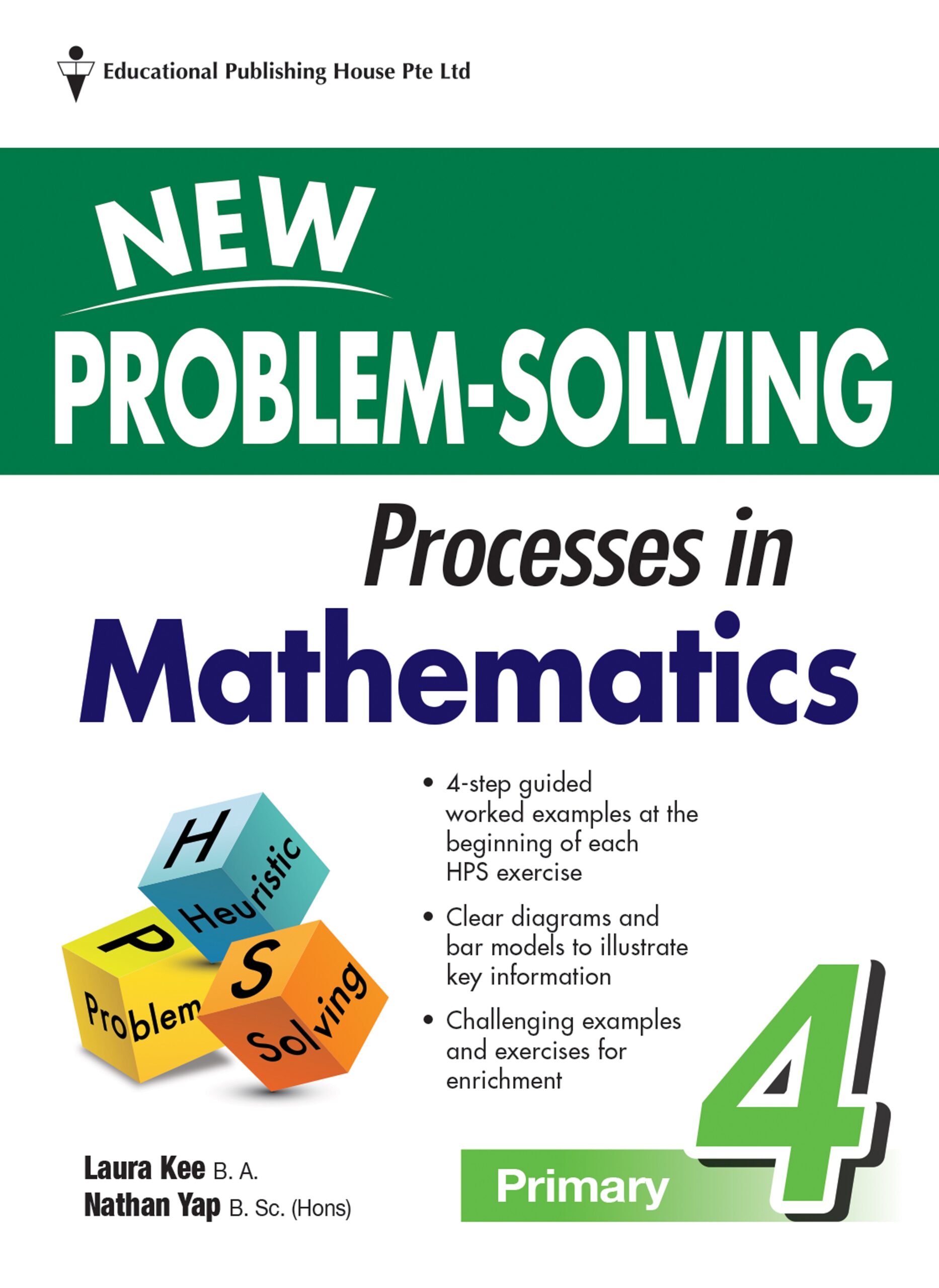
P4 New Problem-Solving Processes in Mathematics
Description, additional information.
New Problem-solving Processes in Mathematics is a series ofPrimary 1–6 Mathematics books that provides comprehensive practices in routine andchallenging word problems.Pupils are exposed to the various essential types of problem-solving heuristics identifiedin the routine practices in each topic. The guided examples that employ the four-stepproblem-solving approach and the scaffolded practice questions in the routine practicesfacilitate structured drilling exercises. Through ample drilling exercises in the routinepractices, pupils will thus be ready to take on challenging word problems in the reviewsets.
Related products
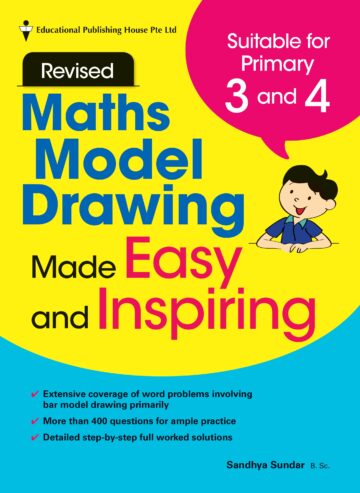
P3 / P4 Model Drawing Made Easy & Inspiring
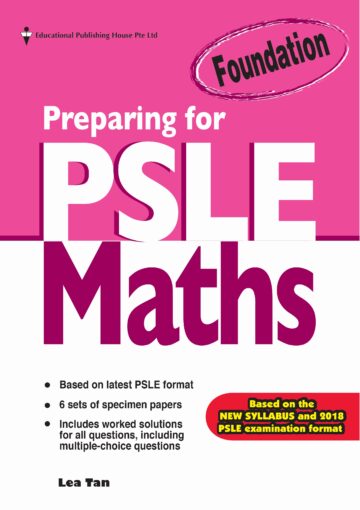
Preparing For PSLE Foundation Maths
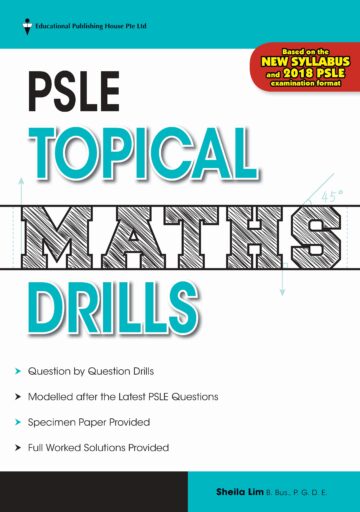
PSLE Topical Maths Drills
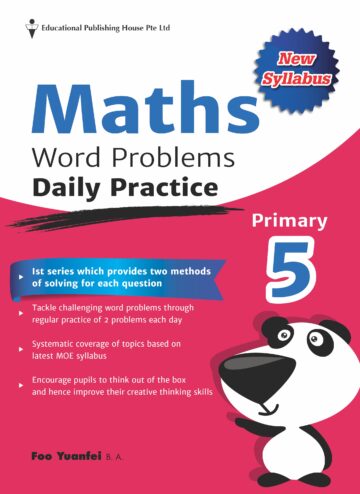
P5 Maths Word Problems Daily Practice
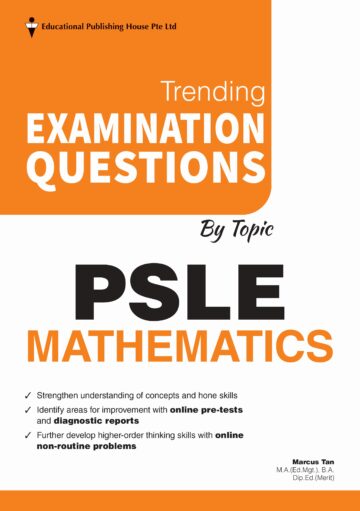
PSLE Maths Trending Exam Questions

P6 TOP Maths Examination Papers
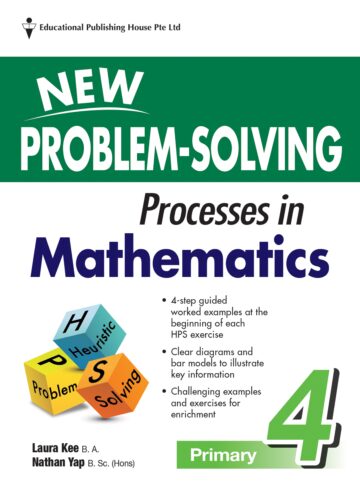
Username or email *

- {{subColumn.name}}
AIMS Mathematics

- {{newsColumn.name}}
- Share facebook twitter google linkedin

Bounding coefficients for certain subclasses of bi-univalent functions related to Lucas-Balancing polynomials
- Abdulmtalb Hussen 1 , , ,
- Mohammed S. A. Madi 2 ,
- Abobaker M. M. Abominjil 2
- 1. School of Engineering, Math, & Technology, Navajo Technical University, Crownpoint, NM 87313
- 2. Mathematics Department, College of Education, University of Gharyan, Gharyan City, Libya
- Received: 20 December 2023 Revised: 13 April 2024 Accepted: 26 April 2024 Published: 28 May 2024
MSC : 30C45
- Full Text(HTML)
- Download PDF
In this paper, we introduced two novel subclasses of bi-univalent functions, $ \mathcal{M}_{\Sigma}(\alpha, \mathcal{B}(x, \xi)) $ and $ \mathcal{H}_{\Sigma}(\alpha, \mu, \mathcal{B}(x, \xi)) $, utilizing Lucas-Balancing polynomials. Within these function classes, we established bounds for the Taylor-Maclaurin coefficients $ \left|a_2\right| $ and $ \left|a_3\right| $, addressing the Fekete-Szegö functional problems specific to functions within these new subclasses. Moreover, we illustrated how our primary findings could lead to various new outcomes through parameter specialization.
- balancing polynomial ,
- Lucas-Balancing polynomials ,
- bi-univalent functions ,
- analytic functions ,
- Taylor-Maclaurin coefficients ,
- Fekete-Szegö functional
Citation: Abdulmtalb Hussen, Mohammed S. A. Madi, Abobaker M. M. Abominjil. Bounding coefficients for certain subclasses of bi-univalent functions related to Lucas-Balancing polynomials[J]. AIMS Mathematics, 2024, 9(7): 18034-18047. doi: 10.3934/math.2024879
Related Papers:
- This work is licensed under a Creative Commons Attribution-NonCommercial-Share Alike 4.0 Unported License. To view a copy of this license, visit http://creativecommons.org/licenses/by-nc-sa/4.0/ -->
Supplements
Access history.
- Corresponding author: Email: [email protected] ;
Reader Comments
- © 2024 the Author(s), licensee AIMS Press. This is an open access article distributed under the terms of the Creative Commons Attribution License ( http://creativecommons.org/licenses/by/4.0 )
通讯作者: 陈斌, [email protected]
沈阳化工大学材料科学与工程学院 沈阳 110142

Article views( 45 ) PDF downloads( 3 ) Cited by( 0 )

Associated material
Other articles by authors.
- Abdulmtalb Hussen
- Mohammed S. A. Madi
- Abobaker M. M. Abominjil
Related pages
- on Google Scholar
- Email to a friend
- Order reprints
Export File

- Share full article
For more audio journalism and storytelling, download New York Times Audio , a new iOS app available for news subscribers.
Whales Have an Alphabet
Until the 1960s, it was uncertain whether whales made any sounds at all..
This transcript was created using speech recognition software. While it has been reviewed by human transcribers, it may contain errors. Please review the episode audio before quoting from this transcript and email [email protected] with any questions.
[MUSIC PLAYING]
From “The New York Times,” I’m Michael Barbaro. This is “The Daily.”
Today, ever since the discovery that whales produce songs, scientists have been trying to find a way to decipher their lyrics. After 60 years, they may have finally done it. My colleague, Carl Zimmer, explains.
It’s Friday, May 24.
I have to say, after many years of working with you on everything from the pandemic to —
— CRISPR DNA technology, that it turns out your interests are even more varied than I had thought, and they include whales.
They do indeed.
And why? What is it about the whale that captures your imagination?
I don’t think I’ve ever met anybody who is not fascinated by whales. I mean, these are mammals like us, and they’re swimming around in the water. They have brains that are much bigger than ours. They can live maybe 200 years. These are incredible animals, and animals that we still don’t really understand.
Right. Well, it is this majestic creature that brings us together today, Carl, because you have been reporting on a big breakthrough in our understanding of how it is that whales communicate. But I think in order for that breakthrough to make sense, I think we’re going to have to start with what we have known up until now about how whales interact. So tell us about that.
Well, people knew that whales and dolphins traveled together in groups, but up until the 1960s, we didn’t really know that whales actually made any sounds at all. It was actually sort of an accident that we came across it. The American military was developing sophisticated microphones to put underwater. They wanted to listen for Russian submarines.
As one does. But there was an engineer in Bermuda, and he started hearing some weird stuff.
[WHALE SOUNDS]
And he wondered maybe if he was actually listening to whales.
What made him wonder if it was whales, of all things?
Well, this sound did not sound like something geological.
It didn’t sound like some underwater landslide or something like that. This sounded like a living animal making some kind of call. It has these incredible deep tones that rise up into these strange, almost falsetto type notes.
It was incredibly loud. And so it would have to be some really big animal. And so with humpback whales swimming around Bermuda, this engineer thought, well, maybe these are humpback whales.
And so he gets in touch with a husband and wife team of whale biologists, Roger and Katy Payne, and plays these recordings to them. And they’re pretty convinced that they’re hearing whales, too. And then they go on to go out and confirm that by putting microphones in the water, chasing after groups of whales and confirming, yes, indeed, that these sounds are coming from these humpback whales.
So once these scientists confirm in their minds that these are the sounds of a whale, what happens with this discovery?
Well, Roger and Katy Payne and their colleagues are astonished that this species of whale is swimming around singing all the time for hours on end. And it’s so inspirational to them that they actually help to produce a record that they release “The Song of the Humpback Whale” in 1970.
And so this is being sold in record stores, you know, along with Jimi Hendrix and Rolling Stones. And it is a huge hit.
Yeah, it sells like two million copies.
Well, at the time, it was a huge cultural event. This record, this became almost like an anthem of the environmental movement. And it led, for whales in particular, to a lot of protections for them because now people could appreciate that whales were a lot more marvelous and mysterious than they maybe had appreciated before.
And so you have legislation, like the Marine Mammal Act. The United States just agrees just to stop killing whales. It stops its whaling industry. And so you could argue that the discovery of these whale songs in Bermuda led to at least some species of whales escaping extinction.
Well, beyond the cultural impact of this discovery, which is quite meaningful, I wonder whether scientists and marine biologists are figuring out what these whale songs are actually communicating.
So the Paynes create a whole branch of science, the study of whale songs. It turns out that pretty much every species of whale that we know of sings in some way or another. And it turns out that within a species, different groups of whales in different parts of the world may sing with a different dialect. But the big question of what these whales are singing, what do these songs mean, that remains elusive into the 21st century. And things don’t really change until scientists decide to take a new look at the problem in a new way.
And what is that new way?
So in 2020, a group of whale biologists, including Roger Payne, come together with computer scientists from MIT. Instead of humpback whales, which were the whales where whale songs are first discovered, these scientists decide to study sperm whales in the Caribbean. And humpback whales and sperm whales have very, very different songs. So if you’re used to humpback whales with their crazy high and low singing voices —
Right, those best-selling sounds.
— those are rockin’ tunes of the humpback whales, that’s not what sperm whales do. Sperm whales have a totally different way of communicating with each other. And I actually have some recordings that were provided by the scientists who have been doing this research. And so we can take a listen to some of them.
Wow, It’s like a rhythmic clicking.
These are a group of sperm whales swimming together, communicating.
So whale biologists knew already that there was some structure to this sound. Those clicks that you hear, they come in little pulses. And each of those pulses is known as a coda. And whale biologists had given names to these different codas. So, for example, they call one coda, one plus one plus three —
— which is basically click, click, click, click, click, or four plus three, where you have four clicks in a row and a pause and then three clicks in a row.
Right. And the question would seem to be, is this decipherable communication, or is this just whale gibberish?
Well, this is where the computer scientists were able to come in and to help out. The whale biologists who were listening to the codas from the sperm whales in the Caribbean, they had identified about 21 types. And then that would seem to be about it.
But then, an MIT computer science graduate student named Prajusha Sharma was given the job of listening to them again.
And what does she hear?
In a way, it’s not so much what she heard, but what she saw.
Because when scientists record whale songs, you can look at it kind of like if you’re looking at an audio of a recording of your podcast, you will see the little squiggles of your voice.
And so whale biologists would just look at that ticker of whale songs going across the screen and try to compare them. And Sharma said, I don’t like this. I just — this is not how I look at data. And so what she decided to do is she decided to kind of just visualize the data differently. And essentially, she just kind of flipped these images on their side and saw something totally new.
And what she saw was that sperm whales were singing a whole bunch of things that nobody had actually been hearing.
One thing that she discovered was that you could have a whale that was producing a coda over and over and over again, but it was actually playing with it. It was actually stretching out the coda,
[CLICKING] So to get a little bit longer and a little bit longer, a little bit longer.
And then get shorter and shorter and shorter again. They could play with their codas in a way that nobody knew before. And she also started to see that a whale might throw in an extra click at the end of a coda. So it would be repeating a coda over and over again and then boom, add an extra one right at the end. What they would call an ornamentation. So now, you have yet another signal that these whales are using.
And if we just look at what the sperm whales are capable of producing in terms of different codas, we go from just 21 types that they had found in the Caribbean before to 156. So what the scientists are saying is that what we might be looking at is what they call a sperm whale phonetic alphabet.
Yeah, that’s a pretty big deal because the only species that we know of for sure that has a phonetic alphabet —
— is us, exactly. So the reason that we can use language is because we can make a huge range of sounds by just doing little things with our mouths. A little change in our lips can change a bah to a dah. And so we are able to produce a set of phonetic sounds. And we put those sounds together to make words.
So now, we have sperm whales, which have at least 150 of these different versions of sounds that they make just by making little adjustments to the existing way that they make sounds. And so you can make a chart of their phonetic alphabet, just like you make a chart of the human phonetic alphabet.
So then, that raises the question, do they combine their phonetic alphabet into words? Do they combine their words into sentences? In other words, do sperm whales have a language of their own?
Right. Are they talking to each other, really talking to each other?
If we could really show that whales had language on par with humans, that would be like finding intelligent life on another planet.
We’ll be right back.
So, Carl, how should we think about this phonetic alphabet and whether sperm whales are actually using it to talk to each other?
The scientists on this project are really careful to say that these results do not definitively prove what these sperm whale sounds are. There are a handful of possibilities here in terms of what this study could mean. And one of them is that the whales really are using full-blown language.
What they might be talking about, we don’t know. I mean, perhaps they like to talk about their travels over hundreds and thousands of miles. Maybe they’re talking about, you know, the giant squid that they caught last night. Maybe they’re gossiping about each other.
And you have to remember, sperm whales are incredibly social animals. They have relationships that last for decades. And they live in groups that are in clans of thousands of whales. I mean, imagine the opportunities for gossip.
These are all at least imaginable now. But it’s also possible that they are communicating with each other, but in a way that isn’t language as we know it. You know, maybe these sounds that they’re producing don’t add up to sentences. There’s no verb there. There’s no noun. There’s no structure to it in terms of how we think of language.
But maybe they’re still conveying information to each other. Maybe they’re somehow giving out who they are and what group they belong to. But it’s not in the form of language that we think of.
Right. Maybe it’s more kind of caveman like as in whale to whale, look, there, food.
It’s possible. But, you know, other species have evolved in other directions. And so you have to put yourself in the place of a sperm whale. You know, so think about this. They are communicating in the water. And actually, like sending sounds through water is a completely different experience than through the air like we do.
So a sperm whale might be communicating to the whale right next to it a few yards away, but it might be communicating with whales miles away, hundreds of miles away. They’re in the dark a lot of the time, so they don’t even see the whales right next to them. So it’s just this constant sound that they’re making because they’re in this dark water.
So we might want to imagine that such a species would talk the way we do, but there are just so many reasons to expect that whatever they’re communicating might be just profoundly different, so different that it’s actually hard for us to imagine. And so we need to really, you know, let ourselves be open to lots of possibilities.
And one possibility that some scientists have raised is that maybe language is just the wrong model to think about. Maybe we need to think about music. You know, maybe this strange typewriter, clickety clack is actually not like a Morse code message, but is actually a real song. It’s a kind of music that doesn’t necessarily convey information the way conversation does, but it brings the whales together.
In humans, like, when we humans sing together in choruses, it can be a very emotional experience. It’s a socially bonding experience, but it’s not really like the specific words that we’re singing that bring us together when we’re singing. It’s sharing the music together.
But at a certain point, we stop singing in the chorus, and we start asking each other questions like, hey, what are you doing for dinner? How are you going to get home? There’s a lot of traffic on the BQE. So we are really drawn to the possibility that whales are communicating in that same kind of a mode.
We’re exchanging information. We’re seeking out each other’s well-being and emotional state. And we’re building something together.
And I think that happens because, I mean, language is so fundamental to us as human beings. I mean, it’s like every moment of our waking life depends on language. We are talking to ourselves if we’re not talking to other people.
In our sleep, we dream, and there are words in our dreams. And we’re just stewing in language. And so it’s really, really hard for us to understand how other species might have a really complex communication system with hundreds of different little units of sound that they can use and they can deploy. And to think anything other than, well, they must be talking about traffic on the BQE. Like —
— we’re very human-centric. And we have to resist that.
So what we end up having here is a genuine breakthrough in our understanding of how whales interact. And that seems worth celebrating in and of itself. But it really kind of doubles as a lesson in humility for us humans when it comes to appreciating the idea that there are lots of non-human ways in which language can exist.
That’s right. Humility is always a good idea when we’re thinking about other animals.
So what now happens in this realm of research? And how is it that these scientists, these marine biologists and these computer scientists are going to try to figure out what exactly this alphabet amounts to and how it’s being used?
So what’s going to happen now is a real sea change in gathering data from whales.
So to speak.
So these scientists are now deploying a new generation of undersea microphones. They’re using drones to follow these whales. And what they want to do is they want to be recording sounds from the ocean where these whales live 24 hours a day, seven days a week. And so the hope is that instead of getting, say, a few 100 codas each year on recording, these scientists want to get several hundred million every year, maybe billions of codas every year.
And once you get that much data from whales, then you can start to do some really amazing stuff with artificial intelligence. So these scientists hope that they can use the same kind of artificial intelligence that is behind things like ChatGPT or these artificial intelligence systems that are able to take recordings of people talking and transcribing them into text. They want to use that on the whale communication.
They want to just grind through vast amounts of data, and maybe they will discover more phonetic letters in this alphabet. Who knows? Maybe they will actually find bigger structures, structures that could correspond to language.
If you go really far down this route of possibilities, the hope is that you would understand what sperm whales are saying to each other so well that you could actually create artificial sperm whale communication, and you could play it underwater. You could talk to the sperm whales. And they would talk back. They would react somehow in a way that you had predicted. If that happens, then maybe, indeed, sperm whales have something like language as we understand it.
And the only way we’re going to figure that out is if we figure out not just how they talk to themselves, but how we can perhaps talk to them, which, given everything we’ve been talking about here, Carl, is a little bit ironic because it’s pretty human-centric.
That’s right. This experiment could fail. It’s possible that sperm whales don’t do anything like language as we know it. Maybe they’re doing something that we can’t even imagine yet. But if sperm whales really are using codas in something like language, we are going to have to enter the conversation to really understand it.
Well, Carl, thank you very much. We appreciate it.
Thank you. Sorry. Can I say that again? My voice got really high all of a sudden.
A little bit like a whale’s. Ooh.
Yeah, exactly. Woot. Woot.
Thank yoooo. No. Thank you.
Here’s what else you need to know today.
We allege that Live Nation has illegally monopolized markets across the live concert industry in the United States for far too long. It is time to break it up.
On Thursday, the Justice Department sued the concert giant Live Nation Entertainment, which owns Ticketmaster, for violating federal antitrust laws and sought to break up the $23 billion conglomerate. During a news conference, Attorney General Merrick Garland said that Live Nation’s monopolistic tactics had hurt the entire industry of live events.
The result is that fans pay more in fees, artists have fewer opportunities to play concerts, smaller promoters get squeezed out, and venues have fewer real choices.
In a statement, Live Nation called the lawsuit baseless and vowed to fight it in court.
A reminder — tomorrow, we’ll be sharing the latest episode of our colleagues’ new show, “The Interview.” This week on “The Interview,” Lulu Garcia-Navarro talks with Ted Sarandos, the CEO of Netflix, about his plans to make the world’s largest streaming service even bigger.
I don’t agree with the premise that quantity and quality are somehow in conflict with each other. I think our content and our movie programming has been great, but it’s just not all for you.
Today’s episode was produced by Alex Stern, Stella Tan, Sydney Harper, and Nina Feldman. It was edited by MJ Davis, contains original music by Pat McCusker, Dan Powell, Elisheba Ittoop, Marion Lozano, and Sophia Lanman, and was engineered by Alyssa Moxley. Our theme music is by Jim Brunberg and Ben Landsverk of Wonderly.
Special thanks to Project SETI for sharing their whale recordings.
That’s it for “The Daily.” I’m Michael Barbaro. See you on Tuesday after the holiday.

- May 29, 2024 • 29:46 The Closing Arguments in the Trump Trial
- May 28, 2024 • 25:56 The Alitos and Their Flags
- May 24, 2024 • 25:18 Whales Have an Alphabet
- May 23, 2024 • 34:24 I.C.C. Prosecutor Requests Warrants for Israeli and Hamas Leaders
- May 22, 2024 • 23:20 Biden’s Open War on Hidden Fees
- May 21, 2024 • 24:14 The Crypto Comeback
- May 20, 2024 • 31:51 Was the 401(k) a Mistake?
- May 19, 2024 • 33:23 The Sunday Read: ‘Why Did This Guy Put a Song About Me on Spotify?’
- May 17, 2024 • 51:10 The Campus Protesters Explain Themselves
- May 16, 2024 • 30:47 The Make-or-Break Testimony of Michael Cohen
- May 15, 2024 • 27:03 The Possible Collapse of the U.S. Home Insurance System
- May 14, 2024 • 35:20 Voters Want Change. In Our Poll, They See It in Trump.
Hosted by Michael Barbaro
Featuring Carl Zimmer
Produced by Alex Stern , Stella Tan , Sydney Harper and Nina Feldman
Edited by MJ Davis Lin
Original music by Elisheba Ittoop , Dan Powell , Marion Lozano , Sophia Lanman and Pat McCusker
Engineered by Alyssa Moxley
Listen and follow The Daily Apple Podcasts | Spotify | Amazon Music | YouTube
Ever since the discovery of whale songs almost 60 years ago, scientists have been trying to decipher the lyrics.
But sperm whales don’t produce the eerie melodies sung by humpback whales, sounds that became a sensation in the 1960s. Instead, sperm whales rattle off clicks that sound like a cross between Morse code and a creaking door. Carl Zimmer, a science reporter, explains why it’s possible that the whales are communicating in a complex language.
On today’s episode

Carl Zimmer , a science reporter for The New York Times who also writes the Origins column .

Background reading
Scientists find an “alphabet” in whale songs.
These whales still use their vocal cords. But how?
There are a lot of ways to listen to The Daily. Here’s how.
We aim to make transcripts available the next workday after an episode’s publication. You can find them at the top of the page.
The Daily is made by Rachel Quester, Lynsea Garrison, Clare Toeniskoetter, Paige Cowett, Michael Simon Johnson, Brad Fisher, Chris Wood, Jessica Cheung, Stella Tan, Alexandra Leigh Young, Lisa Chow, Eric Krupke, Marc Georges, Luke Vander Ploeg, M.J. Davis Lin, Dan Powell, Sydney Harper, Mike Benoist, Liz O. Baylen, Asthaa Chaturvedi, Rachelle Bonja, Diana Nguyen, Marion Lozano, Corey Schreppel, Rob Szypko, Elisheba Ittoop, Mooj Zadie, Patricia Willens, Rowan Niemisto, Jody Becker, Rikki Novetsky, John Ketchum, Nina Feldman, Will Reid, Carlos Prieto, Ben Calhoun, Susan Lee, Lexie Diao, Mary Wilson, Alex Stern, Dan Farrell, Sophia Lanman, Shannon Lin, Diane Wong, Devon Taylor, Alyssa Moxley, Summer Thomad, Olivia Natt, Daniel Ramirez and Brendan Klinkenberg.
Our theme music is by Jim Brunberg and Ben Landsverk of Wonderly. Special thanks to Sam Dolnick, Paula Szuchman, Lisa Tobin, Larissa Anderson, Julia Simon, Sofia Milan, Mahima Chablani, Elizabeth Davis-Moorer, Jeffrey Miranda, Renan Borelli, Maddy Masiello, Isabella Anderson and Nina Lassam.
Carl Zimmer covers news about science for The Times and writes the Origins column . More about Carl Zimmer
Advertisement

COMMENTS
Primary 4 mathematics introduces students to a range of problem sums, challenging their analytical and mathematical reasoning skills. These P4 math problem sums often encompass various concepts and problem-solving strategies, each designed to enhance students' mathematical proficiency. Understanding the type of problem sum and mastering the appropriate solving techniques are crucial for ...
Problem Solving. This feature is somewhat larger than our usual features, but that is because it is packed with resources to help you develop a problem-solving approach to the teaching and learning of mathematics. Read Lynne's article which discusses the place of problem solving in the new curriculum and sets the scene.
Grade 4. Lessons on angles, reducing fractions, using money, and other new concepts. Introduction to algebra and the concept of variables. Math teachers teach students how to use scratchpad and go about the problem in the best way. 4th Grade Math - Multi digit multiplication and division, fraction equivalence and mixed equations.
Unit 1 Place value. Unit 2 Addition, subtraction, and estimation. Unit 3 Multiply by 1-digit numbers. Unit 4 Multiply by 2-digit numbers. Unit 5 Division. Unit 6 Factors, multiples and patterns. Unit 7 Equivalent fractions and comparing fractions. Unit 8 Add and subtract fractions. Unit 9 Multiply fractions.
Start your free trial today! - https://practicle.sg/math-playground-start-free-trial/Before and After Math Word Problems are pretty common when you are in Pr...
Primary Maths (Grades 4 and 5) - Free Questions and Problems With Answers. Grade 4 and 5 maths questions and problems to test the understanding of maths concepts and procedures are presented. Answers to the questions are provided and located at the end of each page. Online calculators to check your answers are provided at the bottom of this page.
Using these Year 4 Maths worksheets will help your child to: round a number to the nearest 10, 100 or 1000; use the > and < symbols correctly for inequalities; use multiples and apply them to solve problems. learn to balance math equations. Rounding to the nearest 10 Worksheets. Rounding to the nearest 100 worksheets.
Primary 4 Maths Questions. These are problems that other students can't solve. Your future exam questions are probably inside so use these to practice! 1) Snap homework photo 2) Upload and wait 3) Solution emailed to you free! Upload Question Here.
Here are some of the curriculum aims, which children need to meet by the end of year 4. Included in these challenge cards are exercises to help reinforce learning on these key maths topics: Converting from hours to minutes in a practical context. Measure and calculate the perimeter of a figure in centimetres and metres.
In P4, your child will expand their problem-solving toolbox by learning heuristics, such as drawing diagrams and looking for patterns. If your child's foundation is weak, they will struggle. Soon, they dread doing their homework or going to class. ... The 2020 Primary 4 Math Syllabus can be divided into 3 main branches - Numbers ...
Singapore Primary 4 Maths Worksheet. Just to share some experiences with parents. Some pupils have difficulty retaining what was taught because they treat the specific process, data, information as "discrete data". The more discrete information is, the less likely it will be retained in their memory. One way parents can do is to help anchor ...
K5 Learning offers free worksheets, flashcards and inexpensive workbooks for kids in kindergarten to grade 5. Become a member to access additional content and skip ads. 4th grade math worksheets: Multiplication, division, rounding, fractions, decimals , telling time, counting money, order of operations, factoring, roman numerals, geometry ...
Multi-step word problems. IXL's SmartScore is a dynamic measure of progress towards mastery, rather than a percentage grade. It tracks your skill level as you tackle progressively more difficult questions. Consistently answer questions correctly to reach excellence (90), or conquer the Challenge Zone to achieve mastery (100)!
Objectives. Encourage students to adopt the right approach in understanding and solving problems. Cultivate students' interest in Mathematics through challenges to achieve a sense of accomplishment. Year End Holiday. Semester 1 (Jan - Mar) - Whole Numbers (Place Values, Factors & Multiples, Multiplication & Division, Working Backwards)
Primary 4 students master Model Drawing Strategy in math, a visual tool to simplify complex word problems, enhancing PSLE preparation. ... From dividing a pizza into equal slices to solving complex real-world problems, division is an essential skill. What are division drills? Division drills, also known as division exercises or practice ...
Students learn about angles, multiplication rules, measurements, and other third-grade math skills. On-demand videos for math skills by teachers who specialize in teaching math to younger students. Learn and master the fundamentals of algebra to prepare for more complex concepts in the next grade.
PUPIL ZONE. Primary 4 Maths Worksheets. P4 Maths: Mrs Sutherland: Fractions Assignment [08/03/2021] 8th March 2021. P4 Maths: Mrs Sutherland: TJ Textbook Work [Page 141] 8th March 2021. P4 Maths: Equivalent Fractions Textbook Work [Page 188-189] 8th March 2021. P4 Maths: Equivalent Fractions Challenge Activity [Purple Triangles]
Multiply by multiples of 10, 100, and 1,000. 3. Estimate products: multiply by 1-digit numbers. 4. Estimate products word problems: identify reasonable answers. 5. Multiply 1-digit numbers by teen numbers using grids. 6. Multiply 1-digit numbers by 2-digit numbers: choose the area model.
The shaded shape is made of 5 congruent squares. The side of one square is 4 cm. Find the total area of the shaded shape. Sam, Carla and Sarah spent on afternoon collecting sea shells. Sam collected 11. If we add the number of sea shells collected by Sam and Carla, the total would be 24.
Ready for Primary Math 4? Take the PM 3A and PM 3B Assessment Tests to find out! ... 34 weekly lessons for parents, and solutions to all word problems — all utilizing the methods, strategies, and terminology of the Singapore Math curriculum. Also included are solutions for problems in the Intensive Practice and Challenging Word Problems books.
Problem Solving in Primary Maths - the Session. In this programme shows a group of four upper Key Stage Two children working on a challenging problem; looking at the interior and exterior angles of polygons and how they relate to the number of sides. The problem requires the children to listen to each other and to work together co-operatively.
Fractions & Decimals I. - Problem Solving on Whole Number, Fractions & Decimals II. - Area & Perimeter. - Revision Exercise. - Mock Paper. - Mock Papers. Topics covered are subjected to change depending on the ability of students. We are dedicated in providingcomprehensive training and school programmes for students as well as ...
P4 New Problem-Solving Processes in Mathematics. Author: Laura Kee & Nathan Yap. SKU: ISBN9789814832373. S$ 16.90. Category: Primary Maths. Description. Additional information. New Problem-solving Processes in Mathematics is a series ofPrimary 1-6 Mathematics books that provides comprehensive practices in routine andchallenging word problems ...
For example, in the equation 4 divided by ½ you must enter it as 4/(1/2). Then the division 1/2 = 0.5 is performed first and 4/0.5 = 8 is performed last. If you incorrectly enter it as 4/1/2 then it is solved 4/1 = 4 first then 4/2 = 2 last. 2 is a wrong answer. 8 was the correct answer. Math Order of Operations - PEMDAS, BEDMAS, BODMAS ...
Colin McDowell, who lost to Woody Zorn by five votes (1,019-1,014) in the House District 36 Democratic primary, asked for the primary night math to be checked again. So, too, did Ed Gallrein. who ...
<abstract> In this paper, we introduced two novel subclasses of bi-univalent functions, $ \mathcal{M}_{\Sigma}(\alpha, \mathcal{B}(x, \xi)) $ and $ \mathcal{H}_{\Sigma}(\alpha, \mu, \mathcal{B}(x, \xi)) $, utilizing Lucas-Balancing polynomials. Within these function classes, we established bounds for the Taylor-Maclaurin coefficients $ \left|a_2\right| $ and $ \left|a_3\right| $, addressing ...
The Sunday Read: 'Why Did This Guy Put a Song About Me on Spotify?'